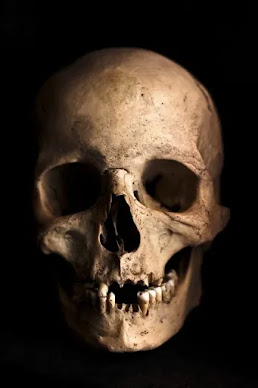Reading Notes: Week 09 "Filipino Tales" Part A
FINALLY!!
It's finally here! I've been waiting specifically for this week where I could read the most anticipated folklore and tales of the semester: Filipino tales!
There were three stories that caught my eye in Part A.
Story 1: "The Three Friends: the Monkey, the Dog, and the Carabao"
- Until this story, I didn't know what a carabao was. I had heard of carabaos' great horns and strength, and, in my mind, I had envisioned something out of a myth. I was so delighted to find it was just a domesticated water buffalo native to the Philippines. And I think it's so cute, too!
A Carabao in the Philippines. Mike Gonzalez. 7 August 2005. (Source: Wikimedia Commons)
- This quote stuck out to me the first time I read it, "...for in union there is strength." I didn't know it at the time, but that's pretty much the lesson to be learned for Part A, aside from the few stories that have their own fables at the end. Many of the stories go on to reinforce the concept of togetherness and cooperation equating to survival. Of the characters who don't work together, at least one usually ends up dead, or they all end up in some sort of awful predicament from which there is no escape. I think the lesson is something the East has really got down, for better or worse in some instances. It's really interesting to see it reflected in the Filipino stories.
Story 2: "The Clever Husband and Wife"
- This story really highlights the theme of strength in union. Without Pedro and his wife Marta working together, their plan to get money from the doctor who employed Pedro would have fallen apart easily.
- The Spanish names kind of threw me off! I had almost forgotten the Spanish had colonized the Philippines. It was interesting to see the fundamental differences in stories that were more Filipino at their core rather than very clearly influenced by the Spanish and Catholicism.
- Honestly, the story was just really fun. Pedro's and Marta's hijinks to get more money from the doctor because they kept running out and felt bad for having to keep asking outright for more money was hilarious! I'm surprised it hasn't been made into a short film or something yet!
- The ending also highlights the difference between East and West, or at the least the Philippines and the West. The doctor is so relieved at the end of the story to learn both Pedro and Marta are okay and alive, and he finds the hijinks funny, too. I feel like if this were more European, then the doctor would not have taken kindly to the deception and would have cast them out rather than embrace them. I think it highlights a really basic, fundamental difference between the Philippines and the West. In the Philippines, one might be upset at a trick played but would rather take comfort in knowing it was a trick and not the truth. Whereas, if it were a more Western story, it would've centered more on lying and trickery of any kind is bad regardless of circumstance and/or relationship and if someone does that to you, don't forgive so easily that no trust is lost.
- I'm not saying all Filipino and Western stories follow that which I laid out above, but it does seem to be an interesting difference between the two modes and reasons of storytelling.
Story 3: "The Enchanted Prince"
- I definitely got heavy Beauty and the Beast vibes from this story. I wonder if every culture just has a story like it, or if the story originated in one place, and through time and word of mouth with travel, it just spread and adapted to that culture.
- This story got me in the heartstrings the most, but it also hit on my "this isn't just" bells.
- I don't think the prince got what he deserved, which was a happy ending. I guess it could be said that being a monkey and seeing his kingdom slowly forgotten was punishment enough, but wrongs are more than punishment of the guilty party. The offended party must be given the chance to be healed and apologized to.
- I would love to rewrite this story to where the prince still suffers his punishment, but he also goes to the witch's daughter and apologizes, and tries to make it up to her. I think it would be really nice if the girl that is supposed to love him most over everything else turns out to be her, the former lover he wronged. I think having them reconcile would make for a very good ending. Plus, I think it would fit with the overall theme of the strength in a couple's union that permeates every other story.
Bibliography
The Three Friends: the Monkey, the Dog and the Carabao from Filipino Folklore by Dean S. Fansler
The Clever Husband and Wife from Filipino Folklore by Dean S. Fansler
The Enchanted Prince from Filipino Folklore by Dean S. Fansler




Comments
Post a Comment